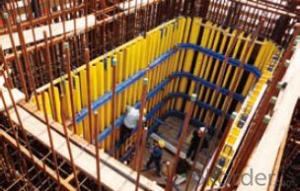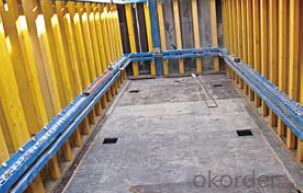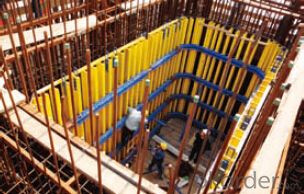Shaft platform S40 Systems for Formwork and Scaffolding
- Loading Port:
- Tianjin
- Payment Terms:
- TT OR LC
- Min Order Qty:
- 50 m²
- Supply Capability:
- 1000 m²/month
OKorder Service Pledge
Quality Product, Order Online Tracking, Timely Delivery
OKorder Financial Service
Credit Rating, Credit Services, Credit Purchasing
You Might Also Like
Shaft Platform
As operating platform, the shaft platform is mainly used in the concrete pouring of elevator shaft,
equipment shaft, stair shaft of high-rise building and so on.
Characteristics:
◆ The length of shaft beam is adjustable.
◆ Flexible structure makes lifting easier.
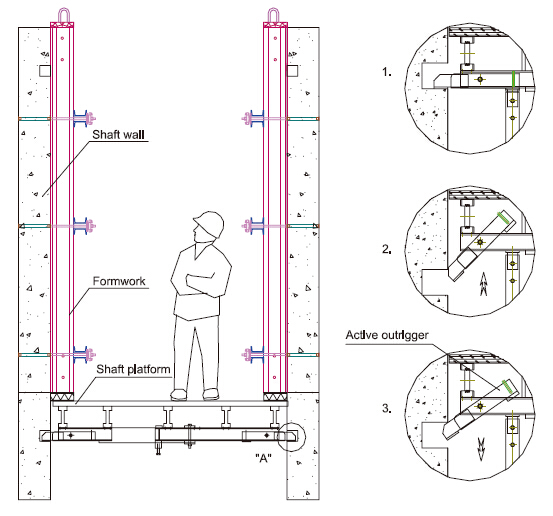
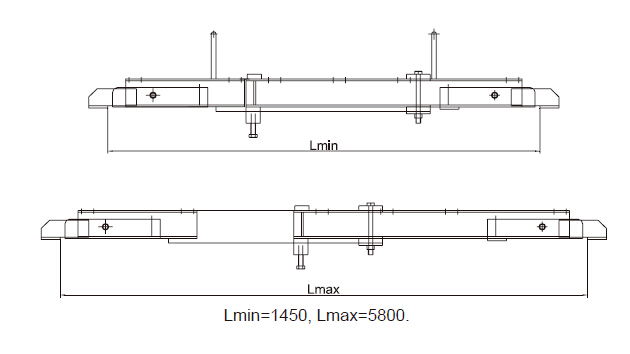
- Q: Can steel formwork be used for projects with stringent quality requirements?
- Steel formwork is definitely suitable for projects that have strict quality requirements. It is well-known for its durability, strength, and consistency, making it a great option for projects that require precision, accuracy, and high-quality finishes. With the ability to withstand heavy loads and maintain its shape and dimensions over multiple uses, steel formwork ensures that concrete structures are formed accurately and precisely according to design specifications. Additionally, steel formwork provides a smooth surface finish, reducing the need for extensive post-construction finishing work. Its robustness and stability make it a suitable choice for projects that require strict quality control, such as high-rise buildings, bridges, and infrastructure projects. Moreover, steel formwork allows for easy customization, enabling contractors to efficiently meet specific project requirements. Overall, steel formwork is a reliable and efficient choice for projects with stringent quality requirements, guaranteeing that the final structure meets the highest standards of quality and durability.
- Q: Can steel formwork be used in seismic areas?
- Yes, steel formwork can be used in seismic areas. Steel is a strong and durable material that can withstand the forces generated during an earthquake. Additionally, steel formwork provides a stable and rigid structure, which is important in seismic areas to ensure the safety and stability of the construction.
- Q: Can steel formwork be used for both small and large-scale construction projects?
- Yes, steel formwork can be used for both small and large-scale construction projects. Steel formwork offers several advantages such as durability, reusability, and flexibility. It can withstand high pressure and loads, making it suitable for large-scale projects that require heavy concrete pouring. Additionally, steel formwork's modular nature allows for easy customization and adaptation to different project sizes and designs. This makes it equally suitable for smaller construction projects, where a quick and efficient formwork system is required. Steel formwork also provides a smooth and high-quality finish to concrete structures, ensuring a consistent appearance regardless of the project scale. Overall, steel formwork is a versatile and reliable choice for both small and large-scale construction projects.
- Q: How does steel formwork affect the overall thermal performance of the structure?
- Steel formwork does not significantly affect the overall thermal performance of a structure as steel is a good conductor of heat. However, it can indirectly impact thermal performance by providing a solid structure that helps in maintaining insulation materials in place, thereby improving the overall energy efficiency of the building.
- Q: Can steel formwork be used for structures with high seismic resistance requirements?
- Yes, steel formwork can be used for structures with high seismic resistance requirements. Steel formwork is known for its strength, durability, and stability, which makes it suitable for withstanding seismic forces. It provides a rigid framework that can withstand lateral forces and vibrations caused by earthquakes. Steel formwork offers several advantages for structures with high seismic resistance requirements. Firstly, it provides a sturdy and reliable support system during the construction process, allowing for accurate placement and alignment of reinforcement and concrete. This ensures that the structural elements are properly connected and reinforced, enhancing the overall seismic performance of the structure. Additionally, steel formwork can be easily customized and adjusted to meet specific design requirements. This flexibility allows for the construction of complex shapes and geometries, which can enhance the structural integrity and resistance to seismic forces. Steel formwork also allows for efficient construction, as it can be easily assembled, disassembled, and reused, saving time and resources during the construction process. Furthermore, steel formwork has a high load-bearing capacity, which is crucial for structures with high seismic resistance requirements. It can withstand heavy loads and distribute them evenly, reducing the risk of structural failure during seismic events. Steel formwork also offers excellent durability and can withstand repeated use, ensuring its long-term performance in seismic-prone areas. In conclusion, steel formwork can be effectively used for structures with high seismic resistance requirements. Its strength, durability, flexibility, and load-bearing capacity make it an ideal choice for withstanding seismic forces and ensuring the structural integrity and safety of the building.
- Q: Does steel formwork require special equipment for installation?
- Special equipment is necessary for the installation of steel formwork. Unlike traditional wooden or plastic formwork, steel formwork is heavier and stiffer, necessitating stronger and more specialized equipment for handling and installation. Cranes, forklifts, and hoists are commonly used to lift and position the steel panels and beams during installation. In addition, specific tools like clamps, braces, and connectors are required to secure the formwork system and maintain its stability while pouring concrete. The utilization of this specialized equipment not only simplifies the installation process but also guarantees the safety and stability of the formwork structure.
- Q: How is steel formwork used in construction projects?
- Steel formwork is a widely used construction technique that involves the use of steel panels and frames to create temporary molds or formworks. These formworks are used to shape and support wet concrete until it sets and hardens into the desired structure. In construction projects, steel formwork is primarily used for large-scale projects such as high-rise buildings, bridges, and dams. The use of steel formwork offers several advantages over traditional timber formwork, including increased strength, durability, and reusability. To use steel formwork, the first step is to design and fabricate the steel panels and frames according to the specific project requirements. These panels are typically made of high-quality steel, which makes them strong enough to withstand the weight and pressure of wet concrete. Once the steel formwork is fabricated, it is transported to the construction site and assembled by skilled workers. The panels are joined together using various connecting methods such as clamps or bolts to create a sturdy framework. This framework acts as a mold, providing support and containment for the wet concrete. The steel formwork is then carefully positioned and aligned in accordance with the project plans. Reinforcement bars, also known as rebars, are often placed within the formwork to add strength to the final structure. Once everything is in place, the concrete is poured into the formwork, filling up the designated areas. During the curing process, the steel formwork plays a crucial role in ensuring the concrete retains its shape and strength. The steel panels prevent the concrete from bulging or deforming under its own weight, resulting in a high-quality and structurally sound finished product. Once the concrete has hardened and gained enough strength, the steel formwork can be removed. Due to its durability and reusability, the steel formwork can be disassembled and used in multiple construction projects, making it a cost-effective and sustainable option. In conclusion, steel formwork is an essential component in construction projects as it provides a reliable and efficient method for shaping and supporting wet concrete. Its strength, durability, and reusability make it a popular choice for large-scale projects, ensuring the successful completion of various structures.
- Q: Is steel formwork suitable for projects with high wind loads?
- Yes, steel formwork is suitable for projects with high wind loads. Steel formwork is known for its strength, durability, and stability, making it an ideal choice for construction projects that are subject to high wind loads. Steel formwork provides excellent resistance against wind forces and can withstand strong winds without deformation or damage. Additionally, steel formwork offers a high level of dimensional accuracy, ensuring that the structure can withstand the forces exerted by the wind without compromising its stability. Therefore, steel formwork is a reliable and suitable option for projects with high wind loads.
- Q: What is the steel formwork and its construction advantages
- Steel formwork is an energy-saving and environment-friendly products, after the wooden template, composite steel formwork, bamboo plywood, all steel template and a new type of product. Can completely replace the steel formwork, formwork, timber, traditional energy saving and environmental protection, low cost amortization.
- Q: What are the considerations when designing steel formwork for elevated walkways?
- When designing steel formwork for elevated walkways, several considerations need to be taken into account. Firstly, the load capacity of the walkway must be carefully calculated to ensure it can support the intended weight of pedestrians and any additional loads such as furniture or equipment. The structural integrity of the formwork is crucial, requiring the use of high-quality steel and appropriate reinforcement to withstand the stresses and forces it will experience. Additionally, safety is a paramount consideration. The formwork must be designed to provide sufficient strength and stability, incorporating features like handrails and non-slip surfaces to prevent accidents and ensure user safety. Adequate access points and emergency exits should also be incorporated into the design. Durability is another important factor. Steel formwork for elevated walkways should be resistant to corrosion and weathering, as these structures are often exposed to various environmental conditions. Proper protective coatings and maintenance strategies should be implemented to ensure the longevity of the formwork. Lastly, the aesthetics of the walkway should be considered. The design should be visually appealing and harmonize with the surrounding environment or architectural style. Attention should be given to details such as finishes, color schemes, and integration with other elements of the overall design. Overall, the considerations when designing steel formwork for elevated walkways encompass load capacity, structural integrity, safety, durability, and aesthetics to create a functional, safe, and visually appealing structure.
Send your message to us
Shaft platform S40 Systems for Formwork and Scaffolding
- Loading Port:
- Tianjin
- Payment Terms:
- TT OR LC
- Min Order Qty:
- 50 m²
- Supply Capability:
- 1000 m²/month
OKorder Service Pledge
Quality Product, Order Online Tracking, Timely Delivery
OKorder Financial Service
Credit Rating, Credit Services, Credit Purchasing
Similar products
Hot products
Hot Searches
Related keywords

